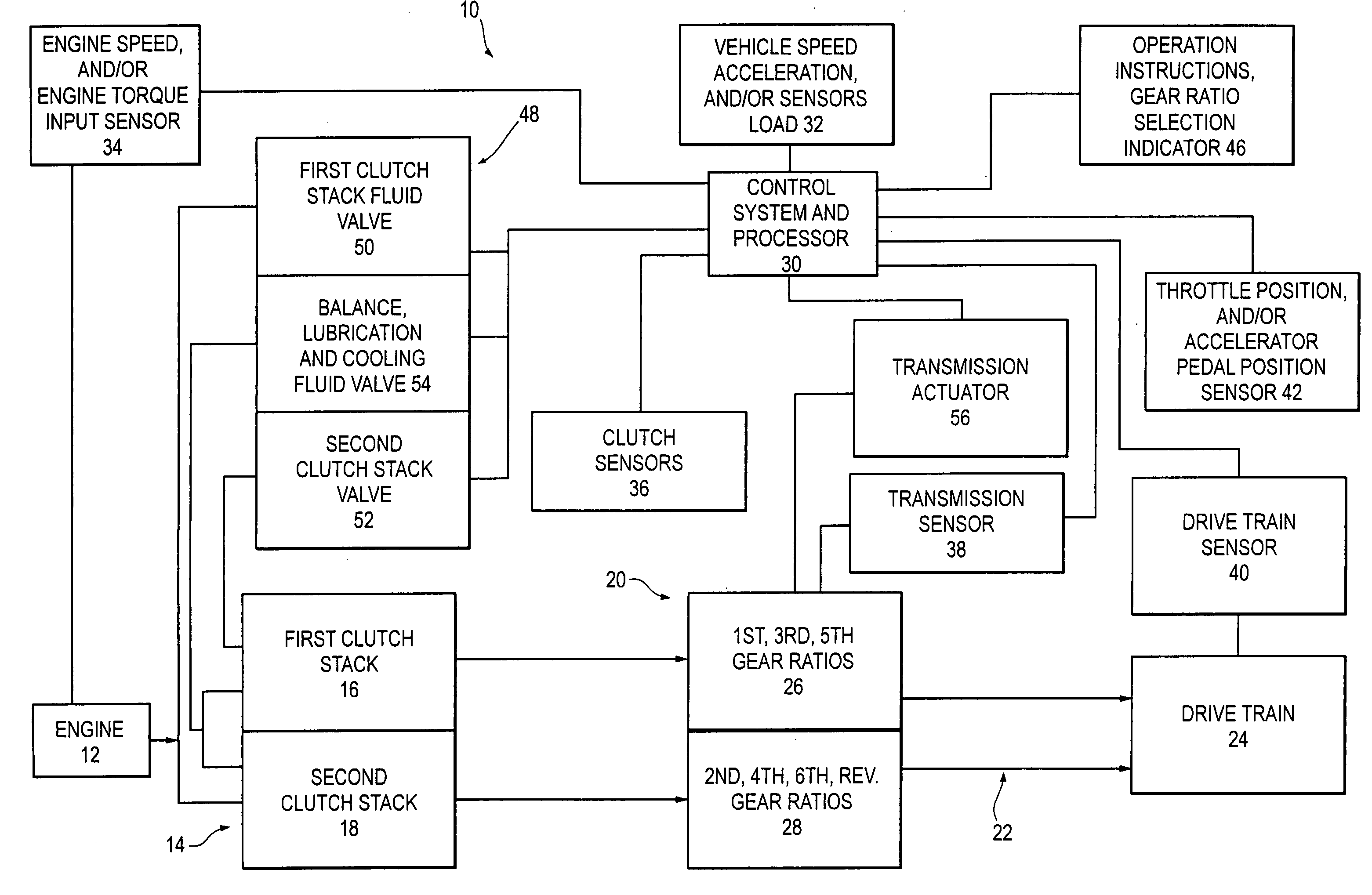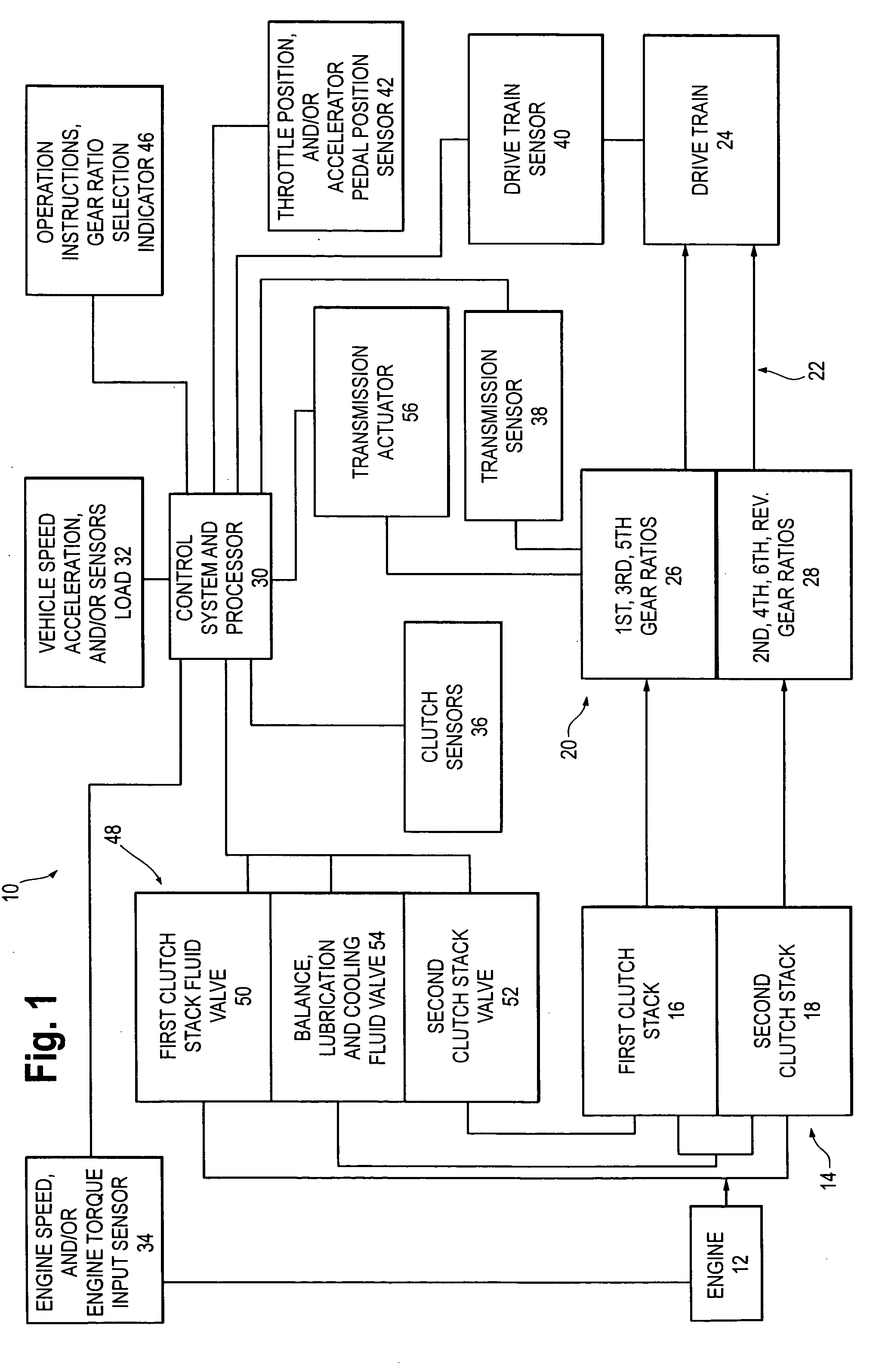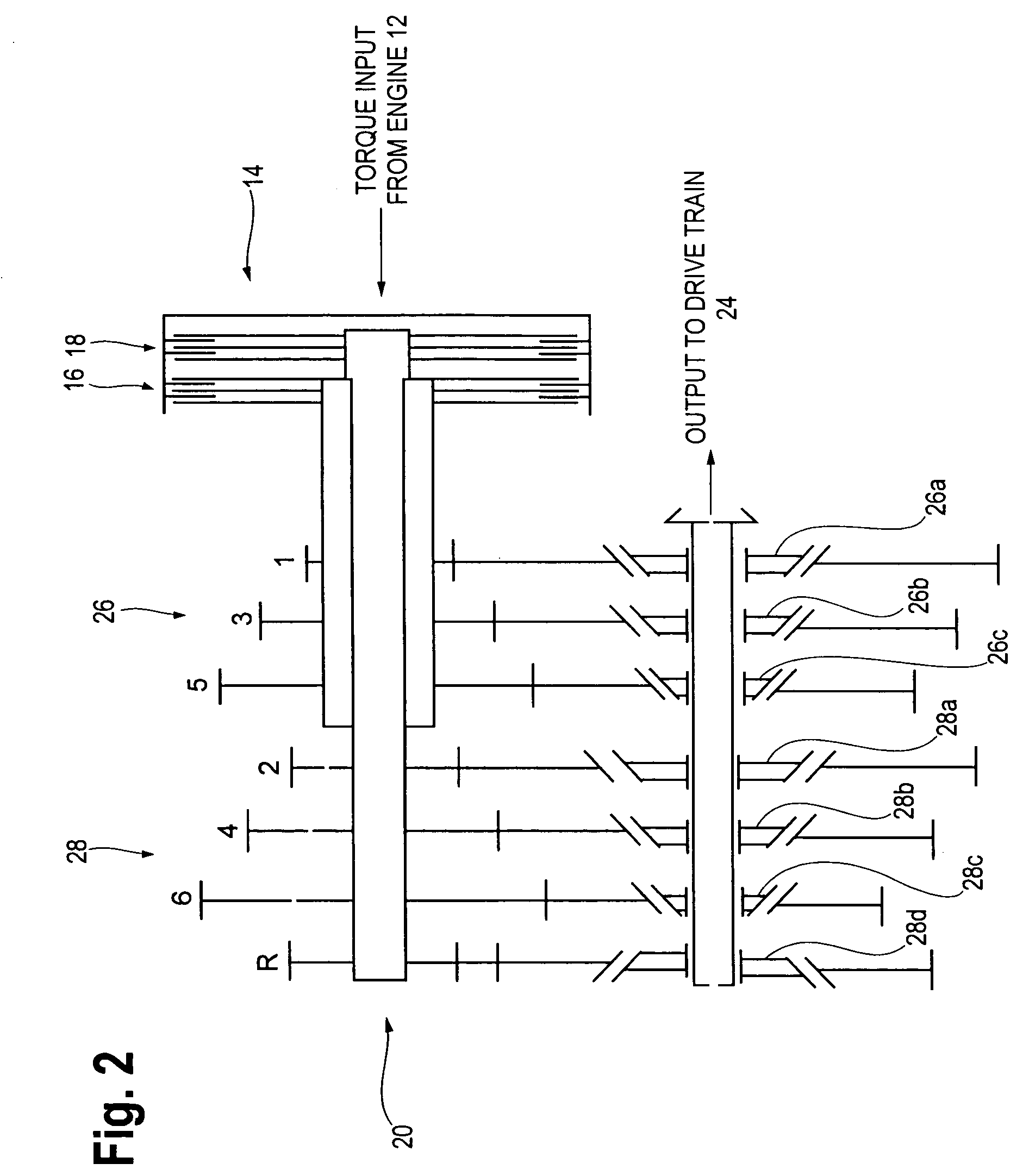Multi-clutch system with blended output system for powertrain transmissions
a transmission system and powertrain technology, applied in the direction of clutches, mechanical equipment, gearboxes, etc., can solve the problems of high cost, high labor intensity, and inability to meet specific design criteria, and achieve the effect of increasing or decreasing the effective gear ratio
- Summary
- Abstract
- Description
- Claims
- Application Information
AI Technical Summary
Benefits of technology
Problems solved by technology
Method used
Image
Examples
Embodiment Construction
[0040]One example of the invention is illustrated in the block diagram of FIG. 1, for an automotive powertrain system 10. In such a system, a torque input source 12, which in this example is an automotive engine, supplies torque to a multi-clutch system 14 through a drive shaft, torque converter, damping system or other transfer systems. Other torque input sources, such as electric motors, hybrid electric motor and internal combustion engine systems, etc. may be used.
[0041]As used herein, references to “gear ratio” generally shall refer to a system or system element input torque and / or speed relative to the system or system element torque and / or speed output unless otherwise indicated by the usage context. For example, a transmission gear ratio, or transmission gear ratio output refers to the engine torque input to a clutch and transmission system relative to the transmission gear or transmission system output.
[0042]In this example, the multi-clutch system 14 comprises a first clutc...
PUM
 Login to View More
Login to View More Abstract
Description
Claims
Application Information
 Login to View More
Login to View More - R&D
- Intellectual Property
- Life Sciences
- Materials
- Tech Scout
- Unparalleled Data Quality
- Higher Quality Content
- 60% Fewer Hallucinations
Browse by: Latest US Patents, China's latest patents, Technical Efficacy Thesaurus, Application Domain, Technology Topic, Popular Technical Reports.
© 2025 PatSnap. All rights reserved.Legal|Privacy policy|Modern Slavery Act Transparency Statement|Sitemap|About US| Contact US: help@patsnap.com



